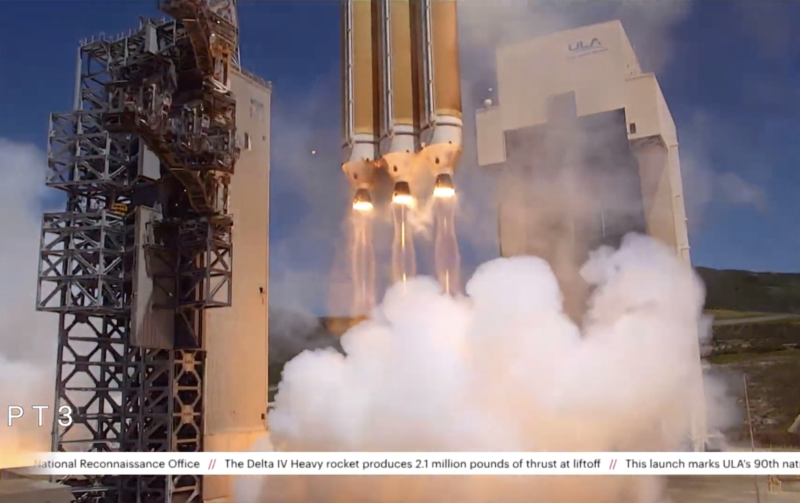
More than four months since its most recent flight, United Launch Alliance (ULA) has kicked off an ambitious—though belated—2021 manifest for its fleet of rockets: the soon-to-be-retired Delta IV Heavy, the workhorse Atlas V and the as-yet-unflown Vulcan-Centaur.
Liftoff of a giant triple-barreled Delta IV Heavy took place from Space Launch Complex (SLC)-6 at Vandenberg Air Force Base, Calif., at 1:47 p.m. PDT Monday, carrying the highly secretive NROL-82 payload for the National Reconnaissance Office. As well as closing out a lengthy hiatus in flights, today’s on-time launch kindles hopes of rejuvenated activity for the remainder of 2021, with up to ten more missions planned before year’s end.
Preparations for NROL-82 got underway in April 2020, when the three Common Booster Cores (CBCs) for the Delta IV Heavy, each measuring 134 feet (40.5 meters) in length, arrived at Vandenberg aboard ULA’s RocketShip vessel.
They were transferred to the Horizontal Integration Facility (HIF) for several months of configuration and erection in SLC-6. Liftoff was originally targeted for last fall, but several months of agonizing delays to the NROL-44 mission—another Heavy flight out of Cape Canaveral Space Force Station, Fla.—pushed this plan inexorably to the right.
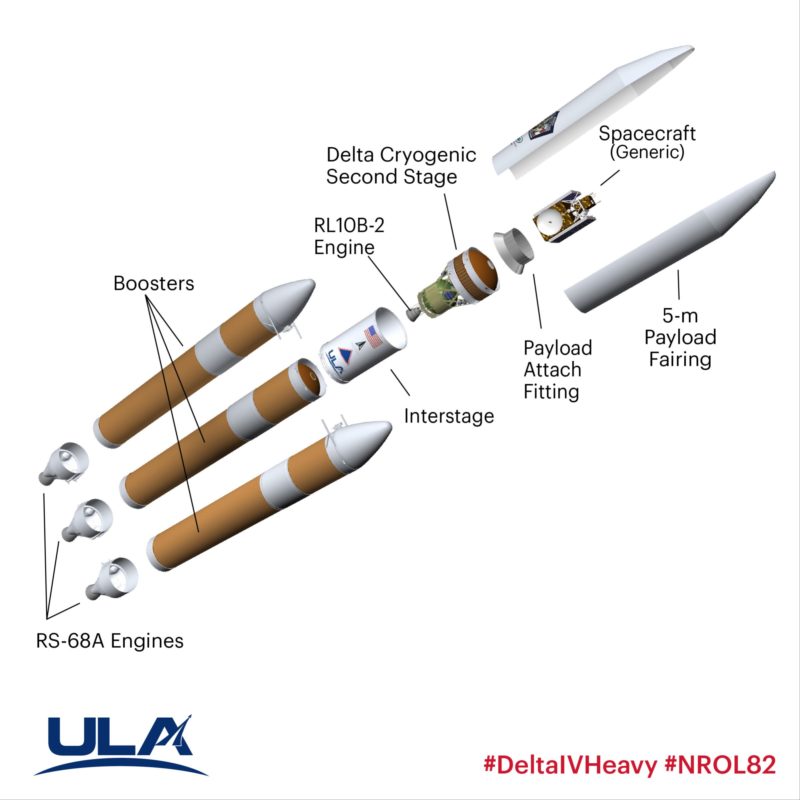
In February 2021, ULA confirmed that the Heavy had been rolled out from the HIF to the SLC-6 pad surface, fastened by a dozen explosive bolts to the structural base furnished by its Launch Mate Unit (LMU).
The horizontal rollout of the booster—minus its 63-foot-tall (19.2-meter) Payload Fairing (PLF)—was facilitated by a 36-wheel diesel-powered transporter on 15 February, after which the stack was raised to the vertical. It was secured inside the pad’s Mobile Assembly Shelter (MAS), which afforded it protection from the elements.
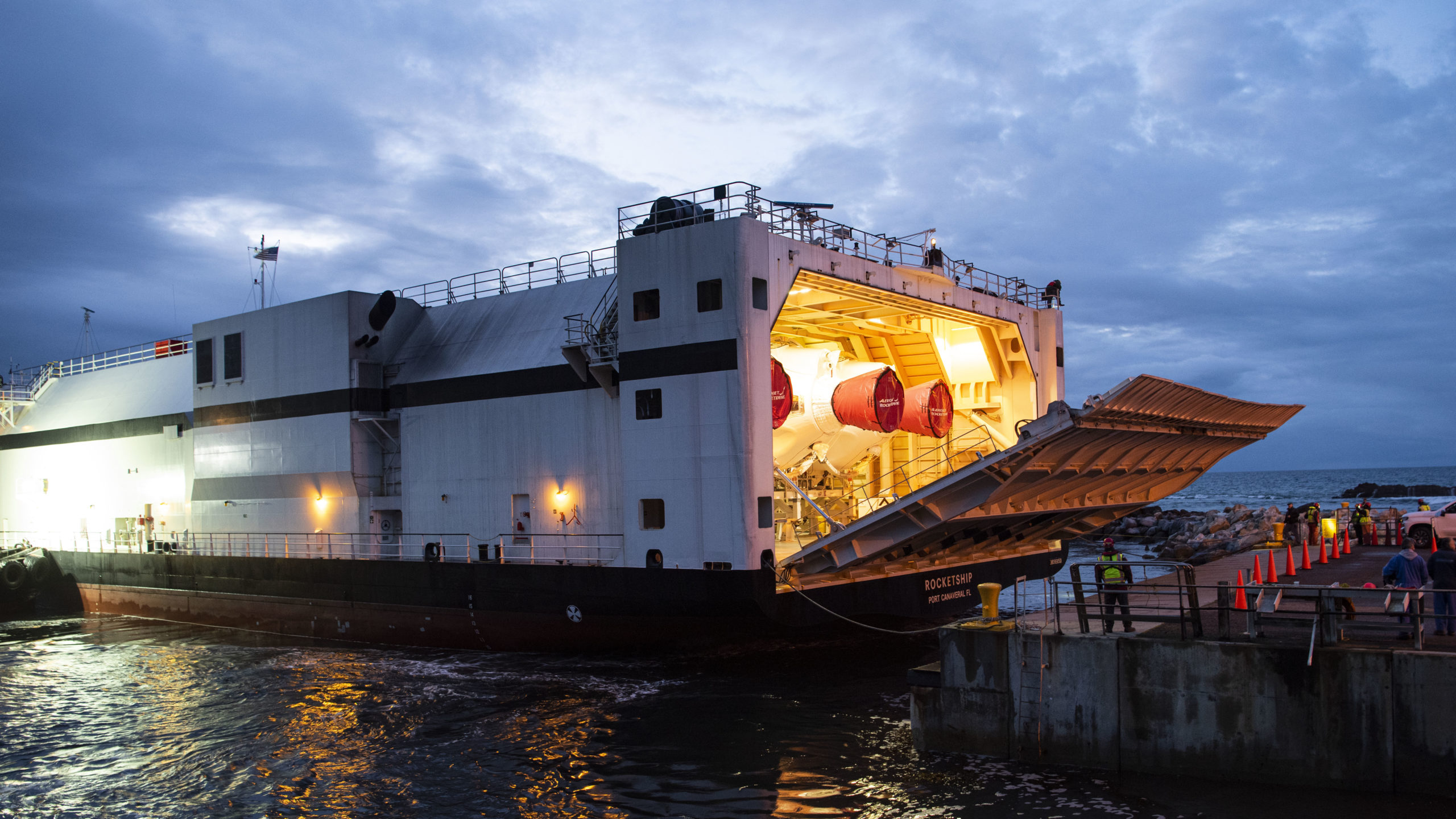
And just last month, a customary Wet Dress Rehearsal (WDR) was performed at the pad, which involved fueling the vehicle with 440,000 pounds (200,000 kg) of liquid oxygen and hydrogen propellants, then counting down through a simulated Terminal Count to a cutoff point at T-4 minutes. WDRs are typically conducted ahead of flights with exceptionally narrow “launch windows” and prior to most NRO missions.
Late last week, the Launch Readiness Review (LRR) confirmed that the 233-foot-tall (71-meter) booster, its payload and all mission-related assets were in a state of preparedness to support the flight and on Saturday the MAS was retracted from its “enclosure” position to its “parked” position. This partially revealed the Delta IV Heavy in all its glory.
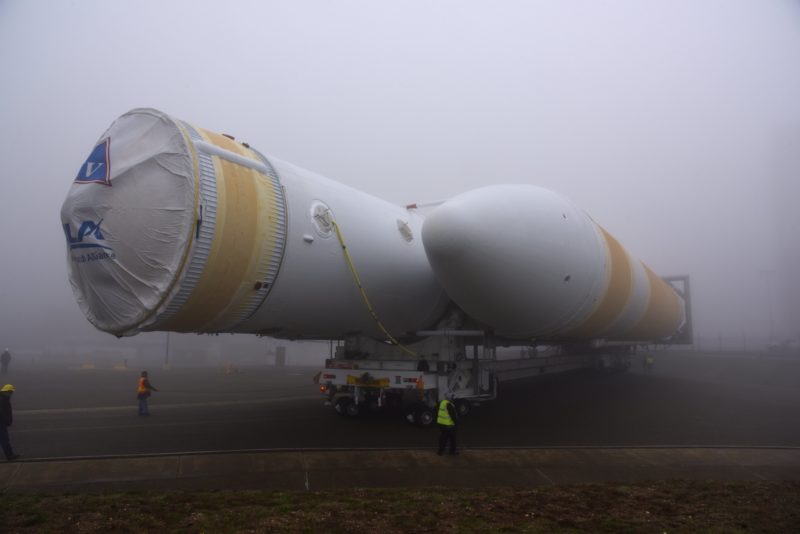
Early Monday, following a weather briefing which initially indicated only a 40-percent probability of acceptable conditions, tempered by high pad winds, ULA Launch Director Tom Heter III issued the formal “Go” to roll back the second major enclosing structure at SLC-6: the Mobile Service Tower (MST). Rolling away from the Heavy at a glacial pace of just 0.25 mph (0.4 km/h), the 32-story tower completed its hour-long retraction process and was “hard-down” at its parked location shortly after 6 a.m. PDT.
As these steps were being meticulously conducted, the Delta IV Heavy itself was steadily coming alive, with guidance, telemetry and flight control systems being brought online.
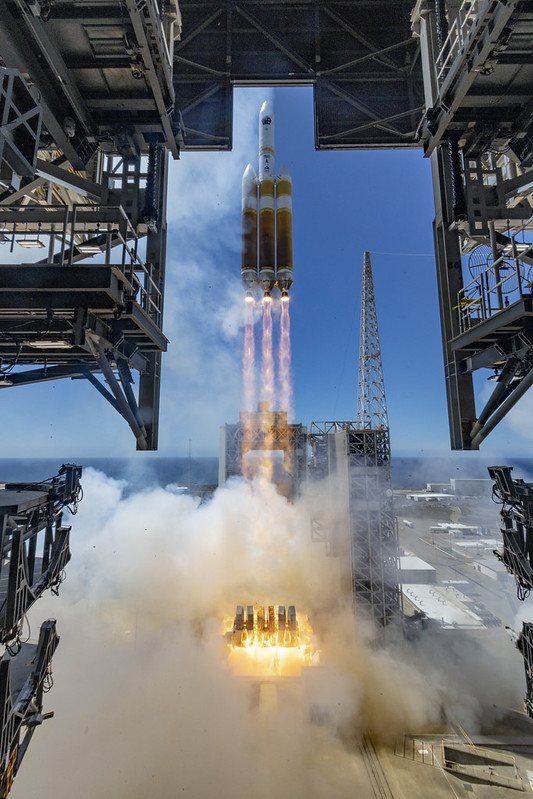
With the weather outlook steadily beginning to brighten, Mr. Heter and ULA Launch Conductor Scott Barney authorized the onset of fueling and over a two-hour period some 440,000 pounds (200,000 kg) of liquid oxygen and hydrogen were loaded into the three CBCs and the Delta Cryogenic Second Stage (DCSS).
During this period, the T-0 time was refined from 1:46 p.m. to 1:47 p.m., aligned one minute to the right in response to a Collision Avoidance (COLA) prohibition. COLAs are brief moments in time in which a launch cannot occur since the trajectory would pass too close to another object already in space.
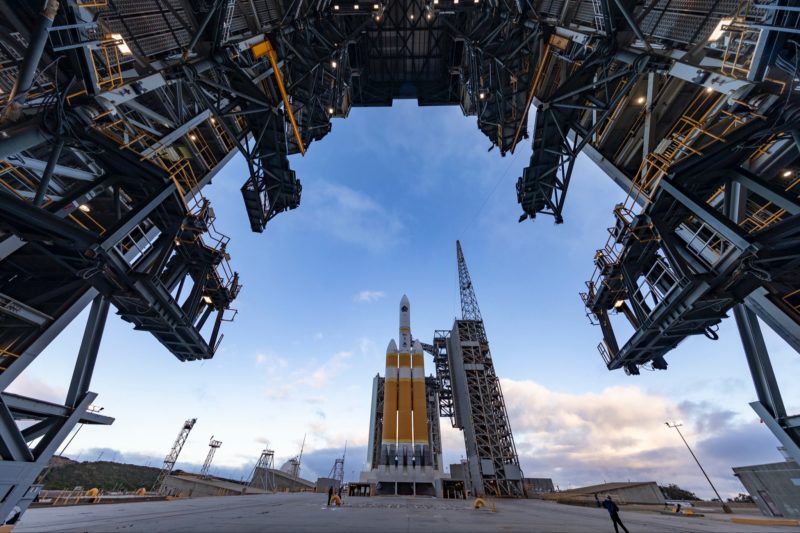
“This analysis is based on a screening of known active and debris objects in orbit,” ULA explained, “that could cause a conjunction with the ascending rocket and payload.” To accommodate the new launch time, an original 30-minute built-in hold at T-4 minutes was extended to 31 minutes.
Counting down to T-4 minutes, the built-in hold took effect at 1:12 p.m. and was duly released at 1:43 p.m. The Radial Outward Firing Igniters (ROFIs) ignited at T-14 seconds to burn off residual hydrogen, creating a sizzling sparkler effect.
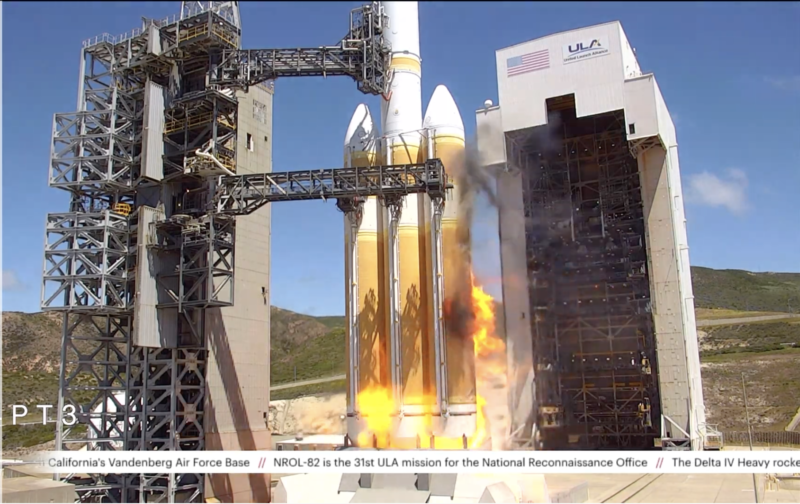
In the final seconds before liftoff, the Aerojet Rocketdyne-built RS-68A engines of the rocket’s three Common Booster Cores (CBCs) completed a staggered-start ignition sequence, producing a thrust of 2.1 million pounds (1.1 million kg). As the engine ramp-up sequence got underway and the hydrogen burn-off concluded, the Delta IV Heavy produced its characteristic fireball effect which still appears a little disconcerting both for the uninitiated and for those rocket-watchers who have seen this many times before.
Shortly after departing SLC-6 atop translucent pillars of dazzling fire, the core throttled back to conserve propellant, whilst the port and starboard CBCs continued to burn at full-bore for almost four minutes.
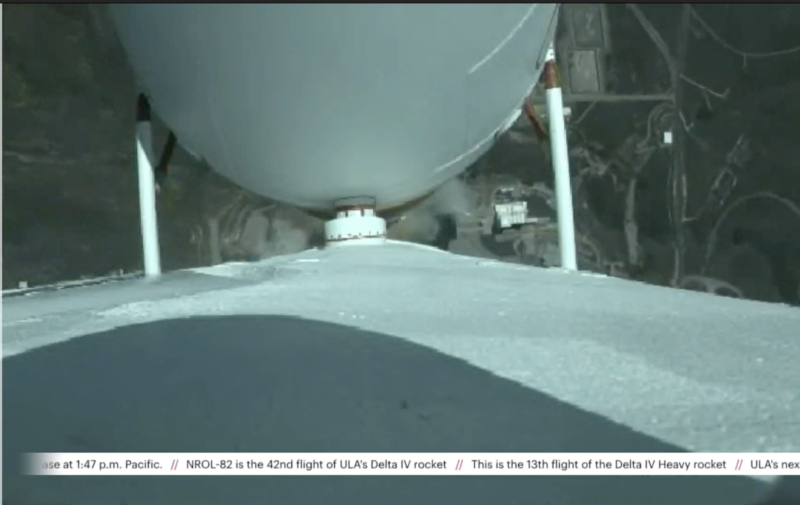
The two side boosters were then exhausted of propellant and jettisoned, after which the core ramped up to full power for a further 90 seconds to continue the uphill climb. It shut down at 5.5 minutes into flight and was itself discarded. By this point, the PLF had also been jettisoned, exposing NROL-82 to the space environment for the first time.
Shortly thereafter, coverage ended, at the NRO’s request, as the secret mission continued. It is expected that the payload will be delivered towards its orbital slot by the single RL10-B-2 engine of the Delta Cryogenic Second Stage (DCSS).
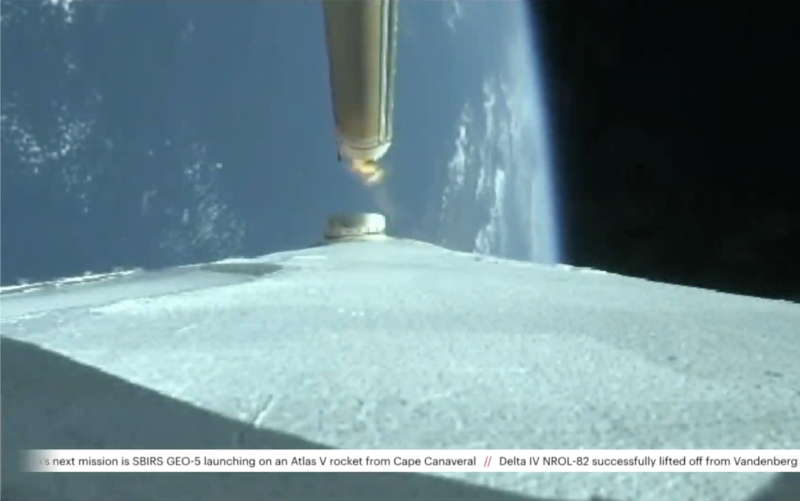
Unsurprisingly, the nature of NROL-82 remains shrouded in secrecy, although it has been suggested that it might be a KH-11 Kennen reconnaissance satellite, weighing up to 41,900 pounds (19,000 kg).
This class of satellites—of which another recent Delta IV Heavy payload, NROL-71, is also believed to have been one—are thought to operate in slightly elliptical orbits at an altitude of 160 x 620 miles (260 km x 1,000 km). They are thought to carry eight-foot-wide (2.4-meter) primary mirrors which afford them a ground-imaging capability of less than six inches (15 cm).
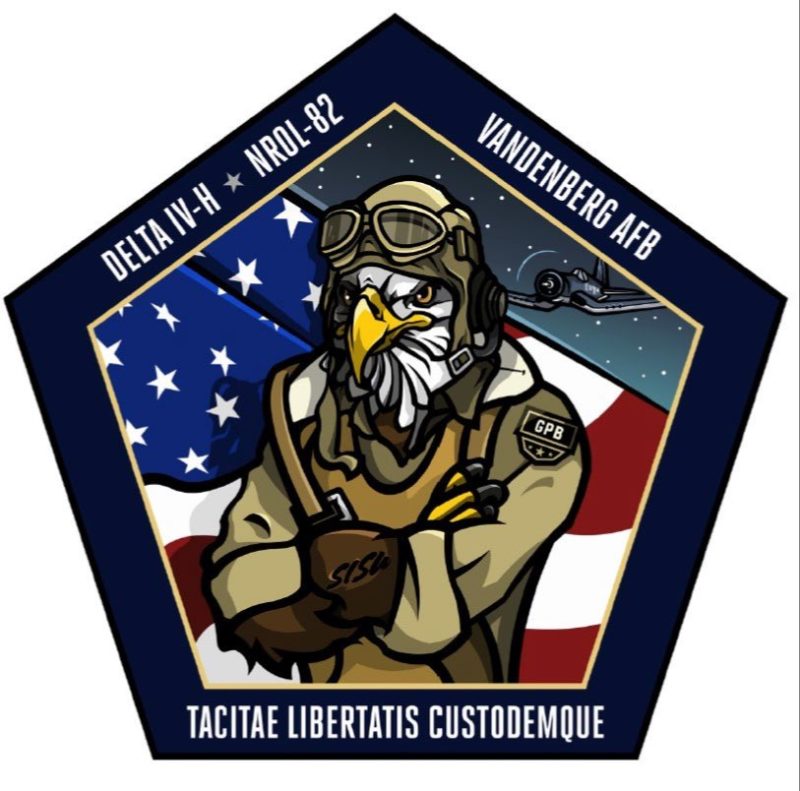
The tantalizing imagery on the NROL-82 mission emblem gives little away: an eagle, representing America’s symbol of freedom, kitted out in the flight gear of World War II fighter ace and Medal of Honor, Purple Heart and Navy Cross recipient Gregory “Pappy” Boyington (1912-1988).
Backdropping the scene is Boyington’s own F-4U Corsair aircraft, with the Finnish word “sisu” (roughly translatable to “perseverance” or “true grit”), on the eagle’s flight-suited arm. And the Latin phrase “Tacitae Libertatis Custodemque” wraps up the patch. Its meaning: Silent Guardians of Freedom.
.
.
FOLLOW AmericaSpace on Facebook and Twitter!
.
.
Missions » NROL »



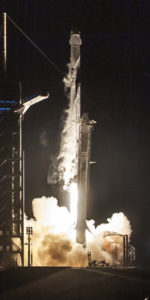
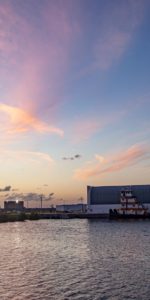
Beautiful pictures